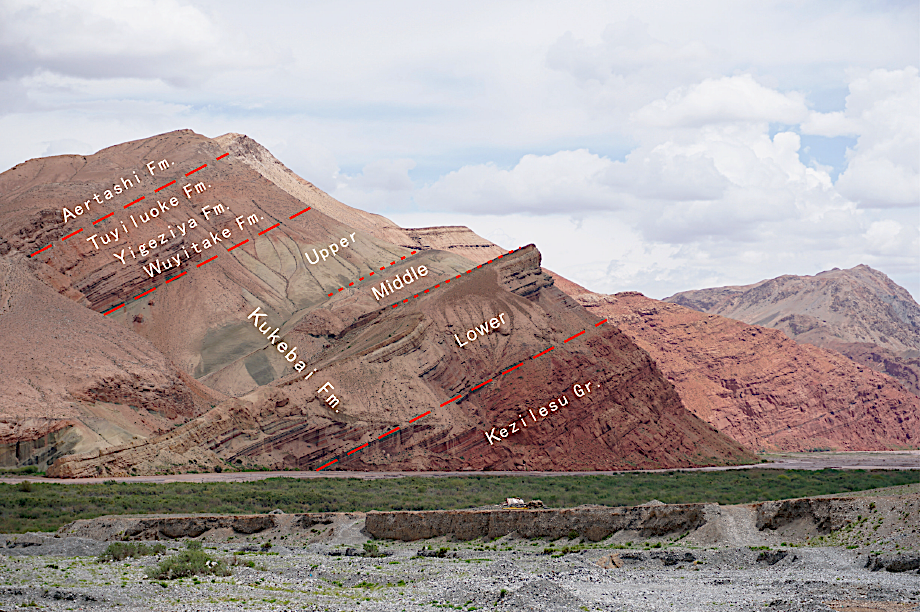Tuyiluoke Fm
Type Locality and Naming
Kashi-Yarkand region (NW Tarim). The naming section is the Tuyiluoke section, southeast of the Yengisar County, Xinjiang (76°15′12″, 38°19′24″). Named by the No. 107 Party of the Xinjiang Petroleum Administration in 1976.
Lithology and Thickness
Red, brownish red, grayish red, grayish white and white mudstone and gypsiferous mudstone, with gypsum and in individual areas occasionally with limestone. A layer of thick-bedded white gypsum occurs at the bottom. In some areas mudstone predominates, while in other areas gypsiferous mudstone and gypsum are dominant and mudstone is rare. The thickness is generally 10–40 m and may reach a maximum of 67 m in the Kuzigonsu area
Relationships and Distribution
Lower contact
The base of gypsum bed of the formation is contact conformably with the underlying Yigeziya Fm, which is characterized by greenish yellow medium-thick bedded limestone.
Upper contact
This formation has a disconformable or conformable contact with the overlying Paleocene Aertash Fm (Alatax Fm).
Regional extent
This formation is only found in the Kuzigongsu area in the front of the Tianshan Mountains, western Xinjiang and at Tuyiluoke, Shalayigou, Aertash (Alatax), etc. in the piedmont zone of the West Kunlun Mountains.
GeoJSON
Fossils
According to Guo Xianpu’s study, the fossil foraminifera of this formation are the Cibicides-Cibicidoides assemblage. The ostracods are mainly Paracypris contracta, Paracyprideis similis, Eopaijenborchella sp., Loxoconcha gabbia, etc. Cibicides mammillatus occurs in the lower Paleocene of southern Sweden, Cibicides cantti in the Paleocene of southern Britain, and Cibicides succedens only in the lower Paleocene of southern Sweden. This species was very prosperous in early Paleocene, but was rare in the late Paleocene. The genera Cibicidoides and Florilus appeared earliest in the Paleocene in various parts of the world and thrived in the Cenozoic. The ostracods species have the features of the Paleogene but also carry the color of the Cretaceous-Tertiary transition. Therefore its age should not be Late Cretaceous but should be Paleocene. However, the lower portion was assigned as upper Maastrichtian by Dangpeng Xi, Xiaoqiao Wan, et al. (2019; Integrated Stratigraphy and TimeScale of China).
Age
Depositional setting
Additional Information
